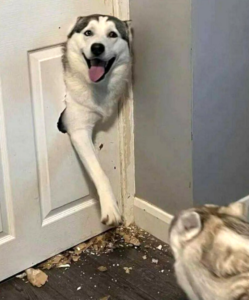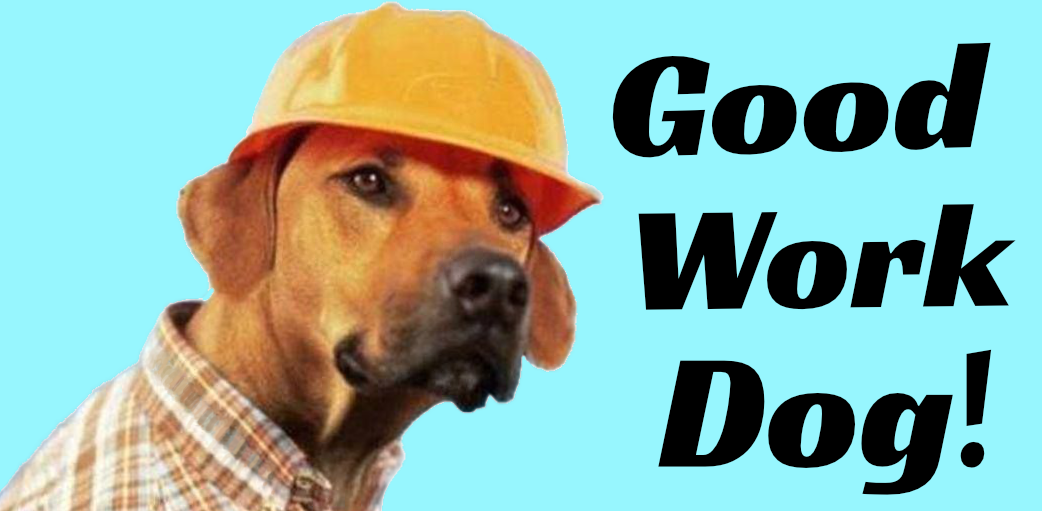What to do with your teenage dog?
We can certainly help you with this, and there are some things to know first about what your dog needs. The most common time people seek out training, daycare, and other activities is when their dog has reached adolescence, typically between eight months and two years old.
Do you remember what you were like as a teenager? We physically grow in all kinds of uncomfortable ways, and powerful new chemistry flows through our brains and bodies. Emotions run high, we stop listening to our parents, and we make some really foolish choices. It’s true for dogs too! Even dogs who went to lots of early puppy classes, and did beautifully then, can change into a whole new creature when they hit adolescence. The part of the brain that learns and makes good choices seems to switch off, and impulsiveness runs the show.

Our dog demands more attention and playtime, they have overwhelming energy, and they start tearing up the house. Some people think it’s time to hire a trainer to make the dog stop acting out. Other people think they should send their dog to play groups, or long hikes, to burn off all that wildness. Each approach has merits and misunderstandings. Fundamentally, just like with humans, the only way to get through adolescence is to survive it with as little harm as possible. We can use training and physical activities as tools to help the dog succeed, but only if we focus those tools on supporting the dog in a structured way.
Training to forcefully make a dog “stop misbehaving” cannot actually work, especially when they are a teenager. We can scare them into obedience in the short term, but that often leads to violent outbursts later on, and the dog will learn to not trust us. Even dogs that stay compliant in the longer term may not be happy, just emotionally shut down. Instead we should use training for mental stimulation, and as a way to give the dog new skills for emotional resilience and making good choices. Adolescent dogs may not pay attention to training the way we would hope, and they often act like they didn’t learn anything at all, but keeping them focused on rewarding tasks can help them form excellent mental pathways for their adult lives. And brain exercise can actually tire a dog out a lot more quickly than physical exercise.
Daycare groups and outdoor excursions can honestly do just as much harm as good, depending on their structure and the skill of the people running the activity. Many daycares have inexperienced employees with no animal behavior education. Most are set up to take in large numbers of dogs, put them all in a big space together, and let the dogs figure everything out on their own. What looks like energetic play on the puppy cam may not show how uncomfortable a dog can be when trapped in that environment, and the dog may learn some really unfortunate strategies for surviving in there.
Hikes usually allow more room for personal space, but running and jumping too hard can harm the development of a puppy’s legs.* As much as we want our teenage dog to blow off steam, we need to help them do it safely. Plan for activity that alternates exercise and rest in fairly short intervals, with less intense impacts. If it’s a group activity with other dogs, make sure someone knowledgeable will be there to help them learn how to socialize comfortably.
At Good Work Dog we plan out the best range of training and exercise for your teenage dog. Our activities have both physical and mental components, with the direct support of an experienced trainer. This helps your growing dog figure out what to do with themselves and how to handle all that internal frenzy. And more importantly we teach you how to give your dog the same type of stimulating and satisfying experiences in your own home, so both of you can thrive through this challenging phase of life.
*Note: Each end of a young puppy’s leg bones has a section of soft cartilage (called a growth plate) that will, over the course of adolescence, harden and attach to the bone, giving the bone length and a resilient end joint. If the legs take too many hard impacts, like from running down stairs or jumping down onto hard surfaces, the soft cartilage can deform. When it finally hardens, the joint may not have the right shape, resulting in arthritis-like symptoms in the adult dog.
